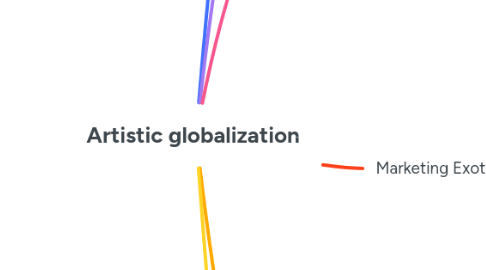Artistic globalization
作者:Marco Loza

1. artistic colonialism
1.1. Images and photographs used to portray and objectify colonized people. North America Land of the “noble savage”. boarding schools to assimilate. Art and artifacts functioned as most powerful weapon against acculturation.Colonial Paternalism. Fine art for the few, the proud, the elite-ONLY.
2. The Art world
2.1. Value of functionality diminished. Gender bias is profound in art world. Anthropologist have exposed art for class and gender discrimination.
3. The exotic primitve
3.1. Exotic artifacts have always been valued. Exotic artifacts have been appropriated, purchased, and stolen in condescending ways. 1897 The British conquered the kingdom of Benin. Copying Cultures without Copyrights. ethnographic present - a description of a culture as it was prior to contact with colonial nations. British Museum maintains an elite ideology.
4. Marketing Exotic art
4.1. Indigenous groups have been systemically marginalized.Simultaneously requesting authentic art and artifacts. Molly Lee (1999) identified focused on collector culture and identified three types. Basket collector Based on the collection of Native American baskets. Special Access collectors. Arts of the Fourth World-artifacts of colonized minority peoples within countries that might be called, First, Second, of Third World. Ethnic avoided the use of the term primitive. Art produced for the market and for ritual purposes.
5. Global and the local
5.1. Core countries- industrialized former colonial states that dominate the world economic system Periphery countries- least developed and least powerful nations Majority of the human population live in periphery nations. Past 100 years the world has hanged more than in the past 300 years. Local people lost interest and actively hostile due to non-Christian artifacts. Museums should support local museums where objects useful parts of local traditions. Locals less interested in museums as repository for artifacts. Kastom-local traditional cultural ideas focus on knowledge and practice, including performance, and focused on issues of land and laws.Powwows-Dance festivals of indigenous Native Americans of US and Canada.
6. Global and the local


